|
Backstories are a powerful writing tool because they intrigue and hook readers, investing them in a world or character with quick glimpses of history or motivations. However, there must be a balance; too much backstory threatens to drown out the current action. Too little backstory can leave the characters wooden or unsympathetic. So, I’ve created this series on how to write backstories to help us bring just enough of what is hidden onto the page. In my Villains series, I’ve covered why your villains need a motivating backstory and how to develop one. So here, I will review ways to reveal the villain’s story naturally. Info Dump and Leave You know the classic scene – the villain has the hero tied up or incapacitated with a sword of hanging. Then, the villain tells his whole backstory and subsequent evil scheme and leaves the hero alone to die, which she does not. You should have a goal to avoid this trope unless you’re trying to be cheesy, and then you should pull it off compellingly. Slowly reveal your villain’s background throughout the story to dodge the bouncy info dump. Even if it’s a surprise villain because your story is a mystery, you can still give your villain an entire backstory while using solid plotting to keep their true nature or motive a mystery. The best backstories are revealed one piece at a time anyway. Villains as Puzzles Speaking of pieces, you want to employ a puzzle strategy to help pace your villain background reveal. A similar strategy works well for antiheroes. It can also work for heroes, but only in situations where you need to keep true motivation or inciting incidents a secret. For the puzzle method, I suggest working backward in your writing. In your notes, write the whole character's backstory and the personality traits or motivations that resulted from the formative moments in the character's life. Then, as you’re telling your story, when one of those traits or motivations shows up, you can use dialog or flashbacks to show the origin of the character aspect. I wouldn’t do this every time there’s a focus on the villain or antihero, but enough so that all the puzzle pieces are in place when it’s time for the big reveal or culminating event. The Big Reveal Villains, and sometimes Antiheros, often have their true nature or motivation hidden for plot reasons. In this type of plotting, it is necessary to do a “big reveal,” wherein you let your audience in on the last piece of the backstory that brings it all together. It’s essential to do this in a way that doesn’t make the reader feel tricked or flat-out lied to. It’s okay for the other characters to feel this way, but you have to use those puzzle pieces to, at the very least, give your readers a chance to know that something is awry, even if you don’t provide them with everything, they need to figure out the villains entire secret. Great Villain Reveals in Literature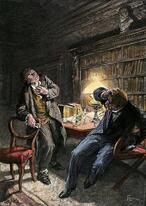 In The Strange Case of Dr. Jekyll and Mr. Hyde, we know a villain named Mr. Hyde is roaming the streets of London, and we know that Mr. Jekyll is an overworked and secluded doctor. The fact that they are the same person may be well known now, but it was a big reveal. This is an excellent example of giving the reader everything they need to solve the mystery but not letting them solve it. No one can say that Mr. Hyde’s identity clues weren’t there. In the graphic novel Watchmen, Ozymandias is supposed to be one of the “good guys” in a world where even the good guys are bad. He ends up being the worst of all of them. Not only is he the murderer in the book’s central mystery, but he’s also planning the biggest mass killing in the history of humanity. This revelation may blindside readers because (at the time) we barely know him, but when combined with his revealed backstory, Ozymandias’s actions make sense. In a master class in puzzle piece backgrounds, The Prisoner of Azkaban’s author gives us all the information readers need to suspect Scabbers while diverting our attention elsewhere. Scabbers’s image in the newspaper prompts Black’s escape from prison. When the escape becomes public knowledge, Scabbers gets sicker and sicker, worrying himself into illness. Also, Crookshanks, a proven clever animal, does everything he can to neutralize the fake rat. Other Blogs in This Series:
0 Comments
Backstories are a powerful writing tool because they intrigue and hook readers, investing them in a world or character with quick glimpses of history or motivations. However, there must be a balance; too much backstory threatens to drown out the current action. Too little backstory can leave the characters wooden or unsympathetic. So, I’ve created this series on how to write backstories to help us bring just enough of what is hidden onto the page. The Power of WhyWe ask our readers to suspend their disbelief when we write about heroic characters, especially in the sci-fi and fantasy realms, where our characters may have fantastic powers or alien technology. The best way to keep readers in the story is to ensure the characters’ motivations and actions make sense. We explain motivation and subsequent action through backstory. Some motivation will happen within the narrative, but most of what shapes that character and makes them into a hero or an antihero with a redemption arc are events that occur outside the bounds of the narrative. If you tell readers why, they don’t have to ask it, and they can stay immersed in the story. Motivations for Bravery There are as many reasons to be a hero as there are heroes. Some people seem to have been born “good” with an innate desire to help and the means to do so. Superman and Discworld’s Captain Carrot come to mind here. If your hero is innately good, people around them will react to them, shaping their backstory. The setting will be a part of determining if innate goodness is viewed as positive or suspicious. No one is good in a vacuum. If the world around the hero is evil or corrupt, something may have happened to them to spur them on the path of righteousness. In the world of heroes, tragic backstories abound. The most famous example of this is the murder of Bruce Wayne’s parents, but the violent death of a loved one is such a trope. I urge any writer going in that direction to find a way to make it a uniquely compelling backstory. Motivation to ActionWhile action versus stagnation is not unique to heroes, villains are likelier to have a solid reason for acting. For heroes, we must know why they are not staying home, enjoying their families, or working their jobs. Perhaps they are an intergalactic sheriff, and the motivation is their job. Maybe they don’t have a job, home, or family – but why not if they don’t? Whatever plot point spurs your hero into action isn’t enough to make the character well-rounded. The backstory that motivated the action is what makes the character real. Let’s say orcs invaded a village. Barry, the blacksmith, fights the orc while almost no one else does, and now Barry is the story's hero. Whatever happened in Barry’s past that made him the one person who stood up to the orcs makes him a compelling character. Otherwise, he’s a plotline banally floating in space. Hero Backstory Examples  Spiderman has a good backstory because he would not have used his powers to fight crime without Uncle Ben’s murder. Spiderman already had his powers and used them to putz around as most of us would. In addition to making Spiderman compelling as a character, this backstory offers a solid drive to action. We never have to ask why Spiderman stopped putzing and started fighting crime. Frodo Baggins’ idyllic life as Hobbit provides an interesting juxtaposition when he’s suddenly thrust into the world of adventuring. Tolkien makes us love and miss the Shire just as much as Sam and Frodo, and protecting his homeland is both notable and a valid motivation. In the Hunger Games Trilogy, Katniss Everdeen is offered a rich backstory with both loss and a fight through poverty. So, when she volunteers in place of her sister, we readers are not surprised. Other Blogs in This Series:
Backstories are a powerful writing tool because they intrigue and hook readers, making them invested in a world or character with quick glimpses of history or motivations. However, there must be a balance; too much backstory threatens to drown out the current action. Too little backstory can leave the characters wooden or unsympathetic. So, I’ve created this series on how to write backstories to help us bring just enough of what is hidden onto the page. I’ve used a few techniques for thinking up and writing backstories, including daydreaming, randomizing, and retrofitting. You can also manage backstory notes in a few ways, in separate files or a story management system. Daydreaming Backstories Daydreaming is where I get many of the backstories for my major characters. I often think about my characters before I start writing about them. I might include them in half a dozen stories in my mind before solidifying my novel's focus or short story's focus. What doesn’t make the cut can become part of my character’s history. The “other stories” of my character get recorded on their notes sheet, which then turns into a timeline of their life along with a list of traits. See my Character Series for more info on this kind of character background. You don’t have to dream up your character’s backstory before you start writing, though. Thinking through substantive events in your character’s history can happen at any time in the character creation and writing process. Randomized Backstories I originally started randomizing characters while playing tabletop roleplaying games, and I needed to come up with a handful of non-player characters (NPCs). Still, I didn’t necessarily want to use up the mental space to dream up their whole lives. There are lots of methods for randomizing backstories, including websites that can generate either elements of a backstory or entire character histories. You can also use character sheets from an established gaming system, such as Dungeons & Dragons or Vampire the Gathering. These sheets can help you flesh out your character’s personality, skills, and history. Retrofitting Backstories Often, writers don’t know a character’s whole backstory or even most of the backstory when they begin writing them. Sometimes, characters “tell” me things about themselves as I write them. Occasionally, I’ll need to add something to a character’s history to make them mesh with the plot. For example, maybe my ghost-hunting character Jennifer has to visit Texas and fly under the radar, so she’ll stay at her previously unmentioned sister’s house. At this point, the sister will need to become her own character, and I’ll need to develop her with a backstory that matches Jennifer’s. Or maybe I need to keep Jennifer out of Texas for a plot point, so I’ll add to her backstory that she’s not allowed in the state due to an old warrant. Whenever I include a bit of backstory, I need to make sure it doesn’t contradict previous details or leave plot holes. Jennifer can’t have a sister in Texas if I previously mentioned that she’s an only child. Similarly, Jennifer wouldn’t have a warrant out for her if she was the sort of person who wouldn’t break the law. All of this brings me to my next point - Backstory Notes Management I need to remember the people in my character’s backstories and when and how the backstories of multiple characters converge. I also have to know how much of each character’s backstory I already have fleshed out. It’s essential to know more about my character and world than what I put in the story, but it’s useless if I forget the details, so notes are essential. You may want a single document that keeps all your notes. I have a separate document for each of my main characters, which, aside from their backstories, also includes a bio, a stock image of what they look like, and a personality overview. I’ve heard of writers using notecards to store this info as well. There is also writing software and systems that can automate this information storage for you. Other Blogs in This SeriesBackstories are a powerful writing tool because they intrigue and hook readers, investing them in a world or character with quick glimpses of history or motivations. However, there must be a balance; too much backstory threatens to drown out the current action. Too little backstory can leave the characters wooden or unsympathetic. So, I’ve created this series on how to write backstories to help us bring just enough of what is hidden onto the page. What is a Backstory?A backstory is the personal history of a character. It can also be the history of a location in your setting, like the history of an inn or spaceship, or the history of your entire setting, as in the continent or world where the action occurs. Even items can have backstories, especially magic items and artifacts. As authors, we should have more of this backstory in our minds or notes than what makes it into the work. Revelation of the backstory should be pertinent to the current situation. As I’ve stated before, when discussing characters, too much backstory is no longer a backstory; it’s just the story. Dusty – A Case Study in BackstoryDusty, the Space Pirate, is afraid of tight spaces. During a raid, he gets stuck in a shipping container with Sophie and reveals to her that, as a child, he was trapped for two days in a collapsed mining tunnel. This is a formative piece of Dusty’s life and perhaps the reason he chose his vocation – all that open ocean. Dusty’s backstory will only get revealed at a time and place that makes sense for it to surface, in this case, when he’s in a similar situation. We also don’t want to dwell too much on the collapsed mining tunnel story. Dusty and Sophie are stuck in a shipping container, and their priority, along with the readers’ attention, is in the present. Connecting the DotsBut most importantly, now that we know this about Dusty, we care about him a little more. If I don’t know a character, how can I care about them? Dialogue helps reveal inner thoughts, and action helps place them in the story, but personal history offers an understanding. Pieces of history humanize a character who is otherwise rooted in the present action of the story. Backstories also set the tone for the novel and the character. We can make Dusty somber and dramatic by adding that he was the only family member to survive the mine collapse. Or we could make it humorous - maybe Dusty had to shimmy out of the mine, which destroys his clothes and leaves him hilariously compromised. In either case, poor Dusty. Revealing Backstories There are two main issues with backstories, and they are on opposite ends of the spectrum. First, there can be no backstory because the author didn’t think of one. On the other hand, some authors leave too much of the backstory in our minds. Both situations make a confusing and unmoored world with one-dimensional characters. There’s a third issue, which is too much backstory in your story. That issue is more straightforward to remedy than the first two; edit it down or plan a long novel (or set of novels). Throughout this series, we’ll discuss techniques for when and how to reveal your backstories.
Science fiction villains are unique due to their many avenues to enact villainy. Evil robots, bioweapons, clones, nano-tech, A.I and so on. Some of these even combine. Maybe the antagonist is a highly developed rogue A.I. who uses virus-infected nano-bots to mass murder an army of clones. Often, featuring futuristic tech is the story's catalyst. And that’s not wrong. After all, who would Dr. Who be without time travel, or where would the Star Trek Enterprise go without warp speed. They’d be stuck in our boring solar system, trying to get water from rocks. No fun. However, the plot and the characters can’t get lost in the exciting technology because you’ll end up with all flash and no substance. The Future of VillainyThe future is ripe for villains. In a post-apocalypse, they’ve already ruined the world, so you’ll need to chronicle the progression of destruction. On the other hand, post-apocalyptic characters are often fighting for survival, making the villains of these stories people who are just slightly more desperate than those who won’t resort to misdeeds. As I mentioned, science fiction plots often hinge on the new and developing. Villains using new technology to enact evil are often of the super-intelligent sort. So, following the rules for writing genius characters is essential if your villain is the mad-scientist type. Inhuman Villains Sci-fi villains come in many forms, and they are often alien or artificial intelligence. These bad guys can be hard to write about because their motivation may be incomprehensible e to humans. How you write this is a narrative choice and leaving the reason for the wrongdoing shrouded in mystery is an option. Conversely, aliens can have similar or the same motivations as humans, and A.I., having been programmed by us, can have built-in human desires. Sci-Fi Villains in Literature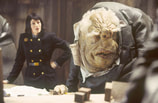 The Vorgon aliens in Douglas Adam’s Hitchhiker’s Guide to the Galaxy are a menace destroying humanity as easily as you order lunch. As a race, they are in the love-to-hate category of villainy for their relentless bureaucracy. Though individual Vorgons each have their own flavor of malevolence. The A.I. in Harlan Ellison’s short story (and later video game) “I Have No Mouth, and I Must Scream” was built to battle in World War III. So, initially, the creators are the villains; however, once the A.I. gains sentience and begins killing indiscriminately, it becomes a villain in its own right. Series Summary The ingredients for a well-written bad guy are timeless. The only thing that changes from genre to genre is their mode of evil. The villain might mean well and just be a little evil or be bent on world domination. The depth of their character is necessary, but it can be hard to ensure character stands out. Connect your readers to the villain the same way you connect your heroes. Give a reason why the villain is the way she is. Give your readers a reason to care, or barring that, a reason to hate. Villains resonate with readers for three reasons: we see ourselves in them, or we like them despite their villainy, or they are so evil we want to see them defeated. The best villains are one of the two, but rarely all three. Think back to the Villain I started the series with – Long John Silver. He was likable but so treacherous that, in the end, we all wanted to see his comeuppance. And that’s the crux of it, Villains are made to be defeated, but that doesn’t mean we can’t love them a little along the way. Other Blogs in this SeriesBefore I finish my Villains blog series, I wanted to give a quick note on why I vanished for six months from my blog and social media. I had a family emergency in March that’s still ongoing, so it’s moved from a crisis to a situation. Then, I started a new job in May doing technical communication for a civil engineering firm. I’m still teaching college courses, but I’ve reduced my course load. I’ve been working on a schedule where I can fit my writing because I’m working on the edits for the next book in my Jade and Antigone series. Unfortunately, that has left blogging and social media dead last on my priorities list. However, I realize I have a large audience, and hundreds of people visit my blog daily. So, I know this blog connects with people, helps writers, and is important too. So, I haven’t abandoned ya’ll. I’m slowly coming out of the chaos that hit me this spring and forming a schedule that works for my many, many, many spinning plates. I’m a working mom with two jobs, an author and a blogger, and I have side projects, including adult literacy and running the Honor Society, where I teach. But, as a gift to myself, I have to dedicate some time to what I love best, writing stories. On that note, I have some cool events this fall for those in New York Flower City Comic ConSept 24-25 at the Total Sports Experience First is the Flower City Comic Con, also known as F3C. This is the fourth year I’ve had a table at this event. They held it at this same location last year, and it was a blast, so I’m really looking forward to it. Facebook Event Page: https://www.facebook.com/events/614229206567093 Website: https://www.fc3roc.com/ Rochester Fantasy Fans Astronomicon November 4-6 at the RIT Inn and Conference Center 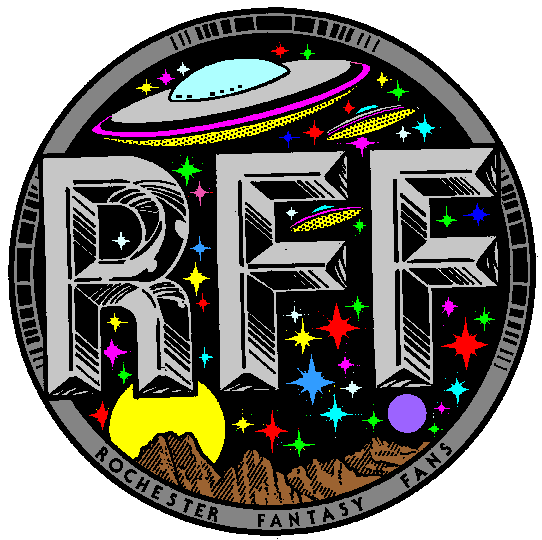 This con was postponed last year due to COVID, so I’m excited to have a table for the first time this year. Facebook Event Page: https://fb.me/e/2tcbOFiW6 Website: http://www.astronomicon.info/index.html Okay, folks, thanks for sticking with me, and hopefully, I’ll have the last blog in my Villains series up soon (it's on villains in sci-fi)! Some villains are exclusive to the fantasy realm or the sci-fi multiverse. Although, their powers and gadgets are what give them this designation, not their character traits. So, you can have an evil genius wizard or an artificial intelligence who is a supervillain. In my last two blogs in the series, I will discuss the villainy unique to these two genres. Sword & Sorcery Evil magicians and terrifying creatures are often the antagonists in the sword and sorcery fantasy subtype. However, a simple predatory creature often isn’t enough to be the main antagonist. Otherwise, they are just sword fodder. If they are predatory, they at least need some cunning. Dragons are an example of creatures intelligent enough to be evil. To be successful characters, evil wizards need a magical solid system. This is more part of worldbuilding, but the magic should have a source and abide by the rules you created for the world. Besides naturally occurring limits, evil magicians should have a weakness that aligns with the character’s backstory and personality. Urban Fantasy Urban fantasy veers into the paranormal realm with stories set in modern times that often feature ghosts, witches, vampires, and werewolves. Urban fantasy tends to feature antiheroes from one of these categories of supernatural creatures. Brooding vampires with hearts of gold and evil witches turned good are often the focal point of these stories, but an antihero isn’t an antagonist. These rogues need a truly nefarious villain to go up against to prove their secret virtues. Forbidden Magic Evil magical practitioners often have access to spells and systems not available to “good” characters. It may be because the power is tied to evil in some way. The Dementors in Harry Potter, for example, feed on negative memories. But more often, it’s because a good character wouldn’t use evil magic because its methods or consequences are corrupt. You’d be hard-pressed to find a positively aligned necromancer or a lawful-good paladin who regularly engages in mind control. Examples of Fantasy Villains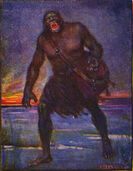 Grendel from Beowulf is one of the oldest fantasy villains. He’s a violent, gigantic creature who terrorized an ancient tavern by attacking, killing, and eating the patrons. He doesn’t have a great character arc or anything and exists to be slain by Beowulf. The sorcerers affiliated with the Dark One in the Wheel of Time series are all magically evil. Power from the Dark One causes madness and can tap into forbidden magic subtypes, such as necromancy. Terry Pratchett’s novel Sourcery features two evil wizards and highlights some tropes we see in sword & sorcery narratives. Ipslore the Red defies wizard convention and has a wife and child, Coin. Coin becomes super-powerful (hence why wizards can’t have kids, but I digress), and Ipslore manipulates his child’s power for his own gain. The Grand Visor in the novel is an “insane” magician too unpredictable to learn at wizard school, but he fits right in at the royal court. Other Blogs in this Series:Supervillains loom larger than life while cackling manically and plotting to take over the world or even the universe. These villains populate many forms of modern storytelling, including fantasy and sci-fi. However, supervillains are most often seen as foils to their counterparts, superheroes. Occasionally, the supervillain’s plans for takeover are so ruinous that other villains switch sides, helping the superhero or even becoming a hero themselves. World Domination is a Tough Gig The problems with supervillains who just want to take over the world are twofold. First, world domination is a boring motive. Second, world domination is brutal. Once you have the world, what will you do with it? Torture everyone? Boo, gross! There will be a coup next week. What else could you do? Create a functional society – that’s not very super-villainy, is it? The dull goal of takeover is often covered up by cool weapons of mass destruction and snazzy henchmen. But, for many, sparkling trappings don’t make up for the weak character. The best supervillains believe they are changing the world for good. However, a more plausible situation is a shadowy group of dogmatics taking over the world, with the villain in the group's upper echelons. The Waterfords in Handmaid’s Tale are an excellent example of this kind of villain. On the other hand, a high-ranking bureaucrat is hardly a bombastic supervillain, and many writers want to include a grandiose antagonist in their stories. I suggest taking a tongue-in-cheek approach if this is your aim. The villain (and the writer) should know she’s over-the-top and own it. If you want to be on the more serious side, consider giving your supervillain an ulterior motive aside from world domination. Maybe they’re trying to take over a company, or a city, a-la the Superman supervillain Lex Luthor. Supervillain Motives Whether they are bombastic or shadowy, taking over the universe or taking over a park, supervillains must have a motive that makes sense. They cannot simply want power; they must want it for a reason, it could be an evil reason or a relatable one, but the lust for power must be justified. A basic motive makes sense, but it should be interesting as well. Perhaps your villain has a crushing fear of being powerless, which turned pathologic, and they must amass more and more money and power without the competency to manage the growing confederation of followers gathering beneath him. Or, maybe your villain’s daughter has an incurable disease, but instead of accepting fate, the villain believes that, with enough power, he can defy natural law. Whatever the reason for the villainy, it should be a good one, and it must be worth all the trouble. Infamous Supervillains 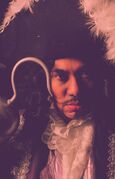 As is the case with many supervillains, Captain Hook’s trauma has corrupted him. He lost his hand to a crocodile in fight with Peter Pan, and now he has a pathological fear of the crocodile. Hook subsequently terrorizes the children of Neverland, determined to extract revenge on Peter. Queen Jadis the White Witch in the Chronicles of Narnia is the “witch” in the most popular book in the series The Lion, The Witch and The Wardrobe remakes the magical realm in her own, cold, snowy image. Normally, I like to stick to literature for my examples, but I’d feel remiss if I didn’t add Emperor Palpatine from Star Wars to the list of super bad bad guys. He’s one of the villains who are so vile he inspires other evildoers to repent and join the hero’s side. Other blogs in this series:There are much more than three types of villains I’m going to discuss in the following few blogs, but many infamous villains can be sorted into one of these categories. There’s also some overlap, and many villains can fit into more than one category. Sympathetic villains have two subtypes, but each one has something in common. The evil acts are something that many people would do, given the situation. The Villain Who Cares too MuchSometimes villains are justifiably selfish in trying to protect themselves and the people they love. Due to circumstances out of their control, they have to make tough choices that have bad outcomes. Many people look at the situation and realize they would do the same thing. A sympathetic villain might sacrifice a handful of people to save their child, or they may unknowingly commit evil acts, either out of carelessness or ignorance. The antagonist in my latest book, Tripping the Multiverse, is, at first, unaware that her actions are causing rifts in multiple universes. After she finds out, she lies and conducts dangerous experiments, attempting to undo her previous mistakes. The Villain Who has a Good Point, ActuallyAnother sympathetic villain is championing a noble cause but often uses underhanded or even vile tactics. Magneto, the arch-villain from the X-Men universe, is a prime example. He’s right. The mutants are being abused and oppressed. This sympathetic villain’s hallmark is access to power and the drive to use that power as a means to an end. Sympathetic Villain versus AntiheroSympathetic villains and antiheroes have a lot of overlap, especially with villains who are acting justifiably selfish. The difference between the two is in character development. The antihero, eventually, makes better choices and turns towards the light, with maybe a few slip us here and there. On the other hand, at some point, the villain must purposefully make a wrong choice. Perhaps the power gets to them. Maybe they were ignorant of the consequences of their actions but chose to carry on with the knowledge that they were harming others. Sympathetic Villains in Literature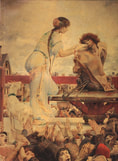 The titular hunchback in Victor Hugo’s Hunchback of Notre Dame, Quasimodo is a genial, kind-hearted guy until his love for Ezmerlda drives him insane. The poor man has spent his life deformed and under the thumb of the much greater evil, Claude Frollo. Since Quasimodo committed most of his evil acts at the behest of Frollo, we can conclude that Frollo is the true monster here. Draco Malfoy from the world of Harry Potter lived his whole life immersed in a world of people committed to Lord Voldemort. He, arguably, didn’t know the difference between right and wrong because his parents raised him in the equivalent of a twisted cult. The Anti-Vampire coalition in Charlaine Harris’s series The Southern Vampire Mysteries (adapted into True Blood) has a point. Throughout her novels, many characters and a few groups form against vampires, citing that vampires are inherently dangerous to humans and their nature can’t be mitigated through medication. Spoilers - the anti-vampires were right. Other Blogs in this SeriesThere are much more than three types of villains I’m going to discuss in the following few blogs, but many infamous villains can be sorted into one of these categories. There’s also some overlap, and many villains can fit into more than one category. The Evil Genius Subcategories of evil genius include the mad scientist, the hacker, and the magic adept. Sometimes they are the ones who make the murderous technology used by criminal organizations, or they could be the designers of doomsday devices. On the other hand, their area of expertise might be politics or manipulation, leaving them the leaders of cults or malevolent armies. Evil geniuses are a fun addition to a story, and they make worthy foes, but they can be tricky to write. High-intelligence characters take a lot of research to write. Chances are, you’re not an expert hacker or an accomplished bioterrorist. But, you’ll have to think like one and have their knowledge to write the evil genius. I suggest reading at least a few books in the antagonist’s area of expertise, particularly ones by experts in their field. Not only will this give you a good knowledge base, but you will also get to know how someone in that field thinks and moves through the world. Weaknesses Nothing is more annoying than an easily foiled supposed genius. A genius should be more intelligent than all the other characters. Your protagonist can’t outsmart them; they’re going to have to find a weakness. Like every other aspect of the character, your antagonist’s weakness should make sense to their character. You should know or write it into your backstory notes, even if it doesn’t make it into the story. Maybe your evil genius is physically weak from a childhood illness, which leads him to focus on science above all else. Perhaps your studious wizard is socially inept after living as an outcast, so he can’t read people to tell when they’re lying. Both the genius’s strengths and failings should match the character. Evil Genius in Literature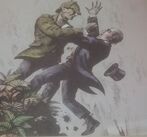 Tywin Lannister in Game of Thrones built an empire on his political and financial savvy. He was also a solid military strategist. His weakness was his cruelty, particularly to his family members, whom he kept physically close. Lord Voldemort from the Harry Potter series was of the master mage family of evil geniuses. He had the same weakness that any litch has, the vulnerability of his phylactery. The Sherlock Holmes nemesis Professor Moriarty is the brilliant boss of a criminal empire. His only real weakness is the existence of Holmes, who is the sole match for his intelligence. Moriarty and Holmes offer a notable exception to the rule that the protagonist should not outsmart the evil genius. More Blogs in this Series: |
Alison Lyke
Categories
All
Archives
November 2022
|
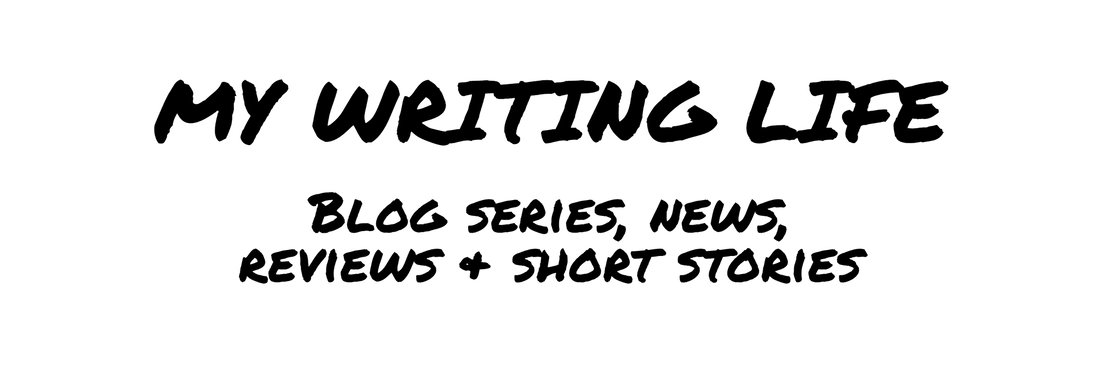
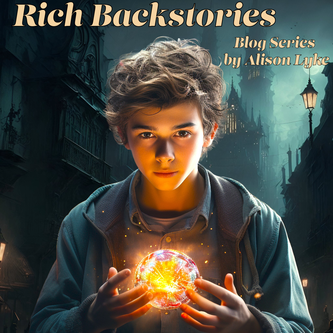

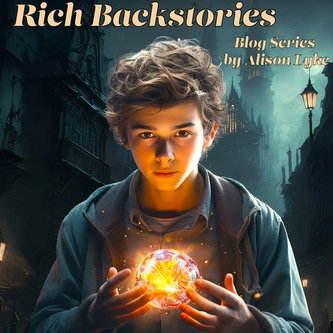
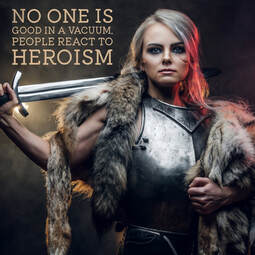
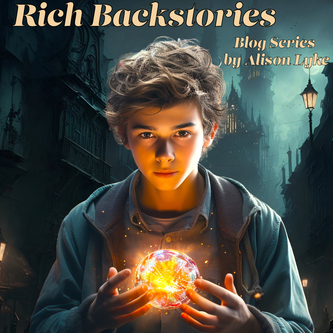
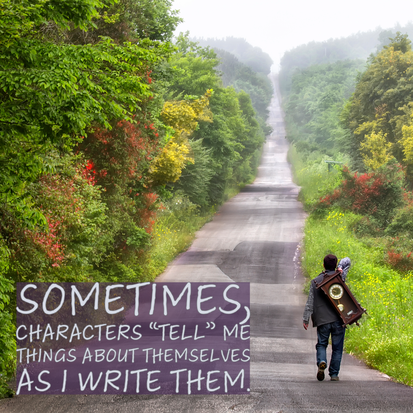
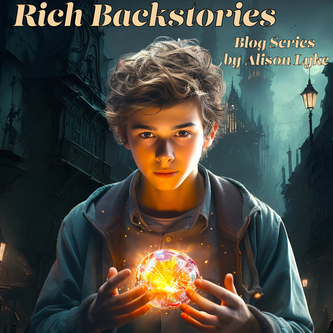
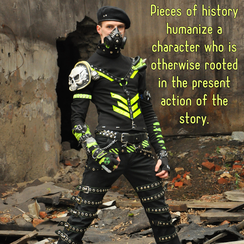
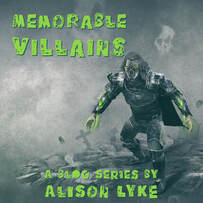
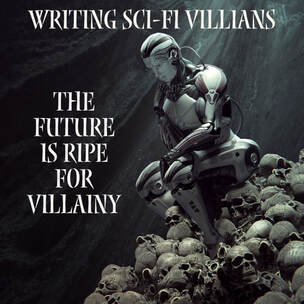
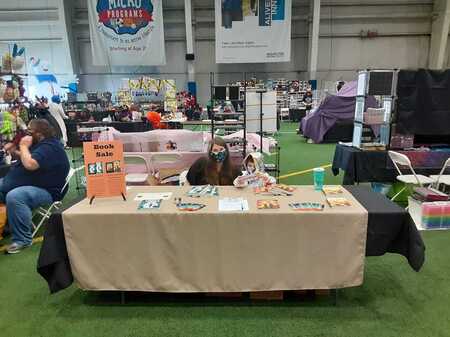

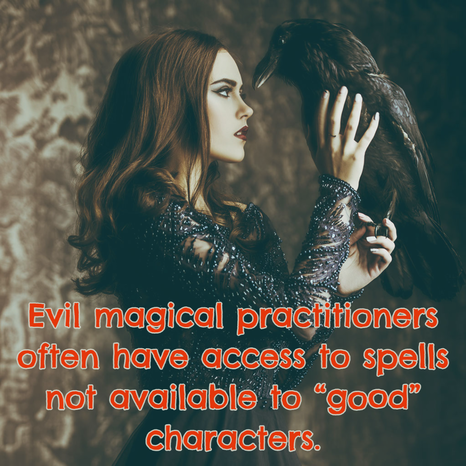
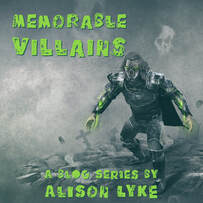
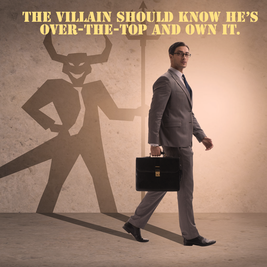
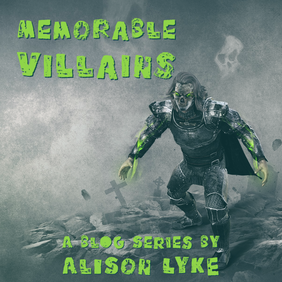
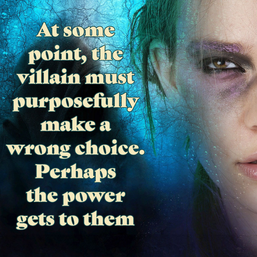
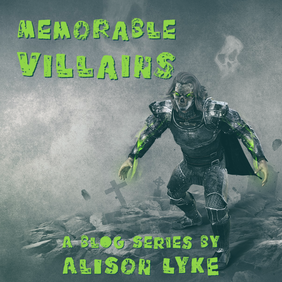
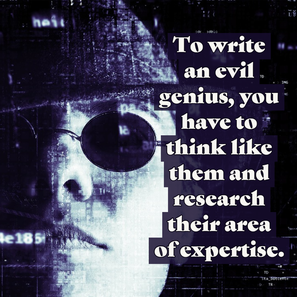
 RSS Feed
RSS Feed
